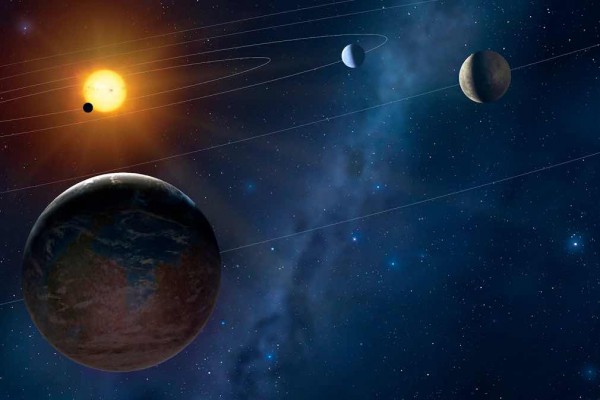The solar system just got a little bit bigger. Astronomers collaborating with the Atacama Large Millimeter/submillimeter Array (ALMA) have identified what they believe could be a large planet on the outskirts of the solar system. Nevertheless, some skeptics are hesitant to embrace the object into the planetary pedigree with open arms.
The object was spotted twice while examining Alpha Centaur, the closest star to our solar system, which is about four light-years away. Two observations are enough to verify the object’s existence, but not quite enough to know much else about it. For instance, astronomers neither know the object’s orbit nor distance, which are necessary to determine its size.
Despite these limitations, the object’s speed and brightness allowed astronomers to rule out the possibility of a star. They suspect it is a Trans-Neptunian Object (TNO) orbiting the sun, anywhere from 10 billion to 2 trillion miles away. By comparison, Pluto is less than 4 billion miles away from the sun.(1)
The motion of the cosmic ocean
Stars usually radiate too much light for astronomers to infer the existence of objects within their immediate vicinity. Nevertheless, the ALMA observatory was designed to catch low-frequency wavelengths, enabling researchers to see objects near the star. Consequently, this allowed scientists to view a mysterious object swiftly moving relative to Alpha Centaur, showcasing what astronomers dub “proper motion.”
The most exciting possibility, which is favored by the researchers, is that the object is about 300 AU away, making it about 1.5 times larger than Earth. If this were true, the object would qualify as the first “super-Earth” found within the solar system. It would be, by far — forgive the pun — the solar system’s most aloof planet.(2)
Another possibility is the object is a faint brown dwarf lost at sea about 20,000 AU away. A brown dwarf should be detectable in the infrared, which is unlikely the case with this object, since it wasn’t discovered sooner by infrared sky surveys.(2)
Indomitable skepticism fires back
The researchers posted their findings online Thursday and are now pending review. Although many people are excited about the discovery, there is reason to be cautious. Adding an additional planet to the solar system would be thrilling, but the odds that the object is a “super-Earth” are relatively small.
In order for an Earth-sized planet to exist at this distance, it would have to have an extremely inclined orbit, which would be atypical of a super-Earth planet. This doesn’t rule out the possibility that the object is a super-Earth planet, but it does make it unlikely.
As Caltech astronomer Mike Brown noted on Twitter, “Fun fact: if it is true that ALMA accidentally discovered a massive outer solar system object in its tiny tiny tiny field of view, … that would suggest that there are something like 200,000 earth sized planets in the outer solar system. Which, um, no.”(1)
Furthermore, the WISE observatory performed a large-scale scan of the sky last year and found no signs of a planet larger than Pluto occupying the periphery of the solar system. WISE senses infrared radiation, which makes objects brighter than they are. Since WISE didn’t detect a super-Earth planet, it suggests the object is a small, cold body in orbit outside Pluto.(1)
If the object is about 100 AU away, the trans-Neptunian object would more than likely be closer to the size of Pluto. This isn’t as exciting as discovering a super-Earth planet, but it would still be the most distant planetoid drifting on the edge of the solar system ever discovered.(2)
For now, astronomers will have to conduct more observations to determine the nature of the object. Whatever the case might be, the solar system just became a tad more crowded.
Sources include:
(1) Astronomy.com
(2) MNN.com
















